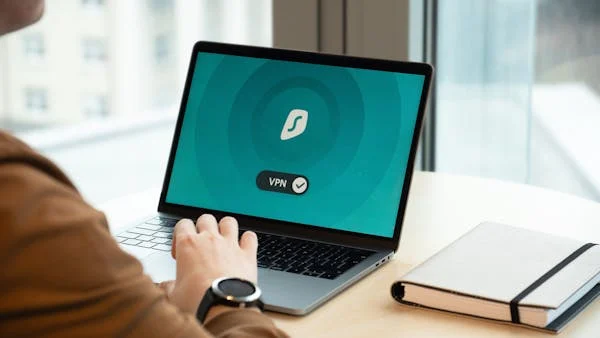CNAPP vs. CSPM: What’s the Difference & Which One Do You Need?
Introduction
Imagine you’re the security guard of a massive cloud fortress. Your job? To protect it from cyber threats lurking in the shadows. But here’s the catch—you have two high-tech security systems to choose from: CNAPP (Cloud-Native Application Protection Platform) and CSPM (Cloud Security Posture Management).
Which one should you trust? Do you need both? Or is one just a fancier, more expensive version of the other?
If you’ve been scratching your head over CNAPP vs. CSPM, don’t worry—you’re not alone. In this guide, I’ll break it all down in plain English. No techy jargon, no unnecessary fluff—just straight-up, practical insights to help you make the right choice for your cloud security.
Let’s dive in.
What is CNAPP? (Cloud-Native Application Protection Platform)
Think of CNAPP as an all-in-one security suite for your cloud applications. It combines multiple security tools into a single platform, giving you a 360-degree view of your cloud security.
Key Features of CNAPP:
Workload Protection – Secures cloud workloads like containers and virtual machines.
Identity Security – Prevents unauthorized access and insider threats.
Cloud Configuration Management – Ensures cloud settings follow security best practices.
Runtime Threat Detection – Monitors applications in real-time for suspicious activity.
DevSecOps Integration – Embeds security directly into the development process.
When Should You Use CNAPP?
- If you need a comprehensive cloud security solution.
- If your organization runs containerized applications (like Kubernetes).
- If you want real-time threat detection and response.
- If you’re embracing DevSecOps and want security built into your CI/CD pipeline.
CNAPP in Action
Imagine you’re running a cloud-based e-commerce platform. A hacker tries to exploit a vulnerability in your application’s code. With CNAPP, you’re alerted in real-time, and the system automatically blocks the attack before it causes damage.
What is CSPM? (Cloud Security Posture Management)
Now, let’s talk about CSPM—your cloud security auditor. It doesn’t actively block threats, but it identifies and fixes misconfigurations that could lead to security breaches.
Key Features of CSPM:
Cloud Compliance Checks – Ensures you meet security standards like SOC 2, GDPR, and HIPAA.
Misconfiguration Detection – Finds security gaps in cloud settings.
Risk Prioritization – Highlights the most critical vulnerabilities.
Continuous Monitoring – Keeps an eye on your cloud environment 24/7.
When Should You Use CSPM?
- If you store sensitive data in the cloud and need compliance.
- If you want to reduce risk by fixing misconfigurations before hackers exploit them.
- If your security team needs visibility into cloud security risks.
CSPM in Action
Let’s say you’re a healthcare company storing patient records in the cloud. A CSPM tool scans your cloud environment and finds that some data storage buckets are publicly accessible—a massive security risk. It alerts your team and suggests how to fix the issue before a breach happens.
CNAPP vs. CSPM: What’s the Difference?
Here’s a side-by-side comparison to make things crystal clear:
| Feature | CNAPP | CSPM |
|---|---|---|
| Purpose | Protects cloud-native applications from threats | Identifies and fixes cloud misconfigurations |
| Threat Detection | Yes, real-time monitoring and response | No, focuses on prevention |
| Compliance & Auditing | Some compliance features | Strong compliance and security auditing |
| Misconfiguration Detection | Yes, but not its primary function | Yes, main focus |
| DevSecOps Integration | Yes, built for security in CI/CD pipelines | No, mainly for post-deployment monitoring |
| Best For | Organizations needing active threat protection | Organizations needing security posture visibility |
Do You Need CNAPP, CSPM, or Both?
Great question! It depends on your cloud security needs.
- If you only need to find and fix security misconfigurations → Go with CSPM.
- If you need active threat protection and security built into your DevOps pipeline → Choose CNAPP.
- If you want the ultimate cloud security strategy → Use both.
Think of CSPM as locking your doors and windows to prevent break-ins, while CNAPP is the security system that detects intruders and calls the cops.
For most businesses, a combination of CNAPP and CSPM provides the best security coverage.
Common FAQs About CNAPP & CSPM
1. Can CSPM replace CNAPP?
Nope! CSPM helps prevent security risks, while CNAPP actively protects your cloud applications. They complement each other rather than replace one another.
2. Is CNAPP only for big enterprises?
Not necessarily. While large enterprises benefit the most, smaller businesses running cloud-native applications can also use CNAPP to protect their workloads.
3. What are some popular CNAPP and CSPM tools?
- CNAPP tools: Palo Alto Prisma Cloud, Wiz, Microsoft Defender for Cloud
- CSPM tools: AWS Security Hub, Check Point CloudGuard, Lacework
4. How much do CNAPP and CSPM cost?
Pricing varies based on features and usage. Some vendors offer pay-as-you-go pricing, while others have enterprise plans. Expect CNAPP to be more expensive due to its broader capabilities.
Final Thoughts: Which One Should You Choose?
If your cloud security strategy only includes CSPM, you’re missing half the picture. Misconfigurations are just one piece of the puzzle—you also need real-time threat protection.
That’s where CNAPP shines. It doesn’t just tell you what’s wrong—it actively stops attacks before they cause damage.
But if budget is tight and you only need compliance monitoring and misconfiguration fixes, CSPM alone might be enough.
At the end of the day, cloud security isn’t one-size-fits-all. Assess your needs, weigh your options, and choose the best solution for your business.
And hey—if you’re still unsure, why not test both? Many vendors offer free trials, so you can see what works best for you.
Disclaimer
This article is for informational purposes only and does not constitute professional security advice. Always consult with a cybersecurity expert before implementing any security solution.
